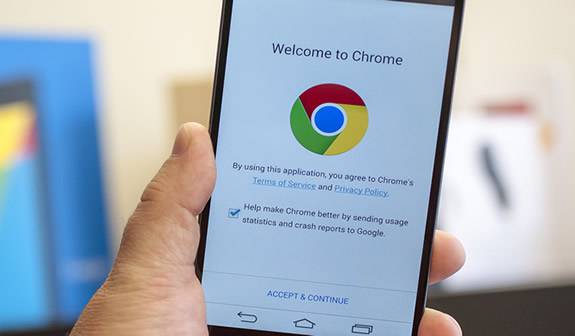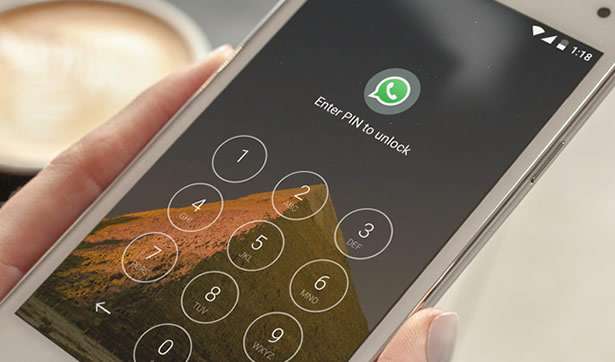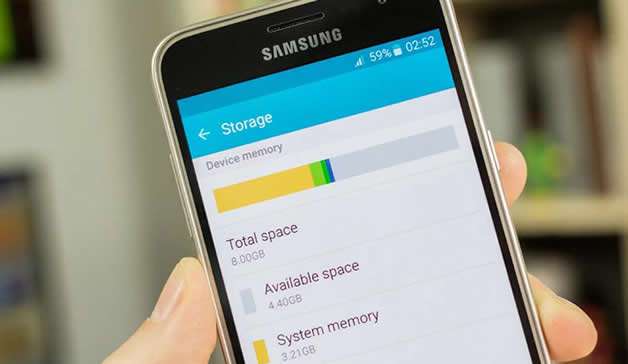Using a Virtual Private Network (VPN) is the most reliable and secure way to access blocked websites on Android. A VPN service will encrypt your connection, making it harder for ISPs or governments to block your website traffic. Additionally, it can route your IP address through a different country, bypassing regional restrictions.
To set up a VPN on an Android device:
1. Open Settings and select Wi-Fi & Internet or Network & Internet depending on your device’s model.
2. Select either VPN or Advanced options where you may find an option called “VPN”. If not available, search for ‘Add a VPN network’ instead and follow the instructions provided by the app provider of choice – these vary from one to another but generally involve entering server details in order to connect securely with their chosen provider’s servers.
3. Once connected, you should be able to access any blocked website without restriction as long as the server location supports it!
How can I open blocked sites on Android without VPN?
How can I access blocked sites without VPN?
Using a Virtual Private Network (VPN) is usually the most secure and reliable way of accessing blocked websites. However, there are some other methods that you can try if you would like to access a blocked site without using a VPN.
1. Utilize a Web Proxy – A web proxy server acts as an intermediary between your computer and the website you want to visit by routing all requests from your device through its servers. This can help bypass geo-restrictions or censorships imposed on certain sites by governments or organizations, allowing you to access them freely.
2. Switch Your DNS Server – Domain Name System (DNS) servers act as address books for the internet, translating domain names into IP addresses so computers can communicate with each other online. By switching your DNS server to one hosted in another country, you may be able to access sites which have been restricted in yours due to censorship laws or geo-restrictions.
3. Try Tor Browser – The Tor browser is an open source project which routes traffic through multiple nodes around the world making it difficult for third parties such as ISPs and government agencies to track users’ locations and activities online while also allowing them access censored content anonymously at acceptable speeds depending on their usage patterns and data sources selected in their settings preferences within the browser itself .
How do I open blocked websites on Android?
Opening blocked websites on Android can be accomplished in a few different ways. Depending on the type of block, you may be able to use a Virtual Private Network (VPN) connection or install an app that works as a proxy server. Additionally, if you have access to the router settings at your location, you can try adjusting DNS settings manually. Below are some steps for each approach:
1. Using a VPN:
• Install and open a reliable VPN app like NordVPN or ExpressVPN on your Android device
• Connect to any available servers that appear in the list
• Once connected, try accessing the blocked website
2. Installing Proxy Server Apps:
• Search for apps such as Orbot or Psiphon Pro from Google Play Store and install one of these apps onto your device
• Launch and configure the proxy server app with its default settings – this is usually done automatically once installed • Try accessing the blocked website via this proxy server
3. Adjusting DNS Settings Manually:
• If possible, log into your router’s web-based configuration page via an internet browser by entering its IP address in the URL bar (e.g., 192.168 168 .0 .1) • Look for options related to Domain Name System (DNS) settings within router preferences e • Change it from “Automatic”/”Obtain Automatically” to “Use These DNS Servers” and enter OpenDNS addresses 208 .67 .222 .222 & 208 .67 220 220 instead • Save changes made then restart both modem & router before attempting again
How do I unblock a website on Chrome without VPN Android?
It is possible to unblock a website on Chrome without using a VPN. To do so, you will need to adjust the settings within your browser. Here are the steps:
1. Open Google Chrome and click the three vertical dots in the top right corner of your screen.
2. Select “Settings” from the drop-down menu.
3. In Settings, scroll down to Advanced at the bottom of page, then select Site Settings under Privacy and Security section.
4. Under Permissions section, select “Notifications” and make sure it is set as “Ask before sending (recommended)” or “Blocked” setting if you don’t want any notifications from websites that you visit in future visits..
5. Scroll down once more and select Pop-ups & redirects > Allow list > ADD SITE > enter URL of blocked website> SAVE changes by clicking Add button next to entered URL address > Close window when done editing site settings preferences for this particular website .
6 Refresh your browser window with new settings applied after closing pop-up window; this will allow access to previously blocked website on chrome without needing a VPN connection every time someone needs access again later on in future visits or sessions while browsing internet with same device/browser combination used here today .
How do I bypass unblocked websites?
Bypassing unblocked websites can be a tricky process, but it is possible. Depending on the type of website blocking software or firewall being used, there are several methods you can try to gain access to blocked websites. Here are some tips that may help:
1. Use a Virtual Private Network (VPN) – Using a VPN allows you to create an encrypted connection and securely tunnel your traffic through another server. This helps bypass any blocks set in place by your ISP or network administrator as the source IP address appears different from the one assigned by your local network provider.
2. Try using Tor browser – The Tor browser routes all internet traffic through multiple nodes before reaching its destination, making it difficult for anyone monitoring your activity to track where you’ve been online or what sites you visited. It also works well for accessing blocked websites in certain countries where censorship is high.
3. Use Google Translate – If the website has been translated into another language, try using Google Translate as this can sometimes get around simple web filters due to the way they operate and how they read content on pages differently than humans would normally do so.
4. Utilize proxy servers – Proxy servers act as intermediaries between clients requesting resources from other servers on behalf of those clients and enable users to bypass restrictions imposed by their ISPs or networks administrators when trying to access certain sites like YouTube, Facebook etc..
5 . Change DNS settings – Sometimes changing your Domain Name System (DNS) settings can help bypass certain restrictions put in place by governmental institutions or organizations such as schools and workplaces which use specific DNS configurations implemented within their internal networks for filtering purposes .
How do I bypass VPN for certain websites?
When it comes to bypassing VPN for certain websites, the most effective approach is to use a split tunneling feature. This allows you to configure your VPN so that some of your traffic passes through the secure tunnel while other traffic does not. The process for setting up this feature varies depending on the type of VPN you are using and how it is configured, but typically involves selecting specific applications or websites that should be excluded from the encrypted tunnel. It may also involve configuring port forwarding rules if necessary.
How do you access a website that is blocked in your country?
Accessing websites that are blocked in your country is a challenging task and requires some technical know-how. The best solution for this will depend on the type of blockage in place, so it is important to first understand how the website is being restricted before attempting any solutions. Here are some steps you can take to access a blocked website:
1. Check if the website has an IP address – If the blocked site has an IP address, you may be able to access it by entering the URL into your browser’s address bar instead of its domain name.
2. Use a proxy server or VPN – Using a virtual private network (VPN) or proxy server can help bypass geo-restrictions and get around blocks imposed by governments or employers. You’ll need to find one that provides unrestricted access to websites outside your current location; however, these services often require payment and/or registration with its service provider.
3. Try using alternative DNS servers – Domain Name System (DNS) determines which server hosts content related to typed web addresses, so changing DNS servers could potentially unblock sites from where they were previously unavailable due to censorship methods used by authorities in certain countries . To use alternate DNS servers, you must manually configure them on each device connected to the network without affecting other devices connected at home or work networks..
4. Utilize Tor Browser – Tor Browser is an open source browser designed specifically for accessing restricted content online while keeping user data anonymous and secure; it routes traffic through multiple nodes across different locations worldwide making it nearly impossible for ISPs or government agencies from tracking individual users’ activities online .
5. Contact local ISP – Finally, contacting local internet service providers may provide additional insight as well as options available for accessing specific websites depending on their policies regarding such requests .
Why can ti access over 18 sites on my Android?
It is possible to access over 18 sites on your Android device depending on what web browsers and content filters you have installed. To ensure that you are able to access the appropriate content, it is important to review any parental control settings or other restrictions that may be in place. Additionally, there are a few steps that can help you gain access to these types of websites:
1. Install an alternative browser such as Firefox, Chrome or Opera which offer greater flexibility for accessing different types of online content than some default browsers
2. Utilize private browsing mode when accessing these websites so your search history will not be saved
3. Consider using a VPN service which can provide enhanced security and privacy while surfing the web
4. Ensure that any anti-virus software you have installed is up-to-date and capable of detecting malicious content before it reaches your device
By following these steps, you should be able to successfully gain access to over 18 sites through your Android device
{“@context”:”https://schema.org”,”@type”:”FAQPage”,”mainEntity”:[{“@type”:”Question”,”name”:”How can I access blocked sites without VPN?”,”acceptedAnswer”:{“@type”:”Answer”,”text”:”nnUsing a Virtual Private Network (VPN) is usually the most secure and reliable way of accessing blocked websites. However, there are some other methods that you can try if you would like to access a blocked site without using a VPN. nn1. Utilize a Web Proxy u2013 A web proxy server acts as an intermediary between your computer and the website you want to visit by routing all requests from your device through its servers. This can help bypass geo-restrictions or censorships imposed on certain sites by governments or organizations, allowing you to access them freely. nn2. Switch Your DNS Server u2013 Domain Name System (DNS) servers act as address books for the internet, translating domain names into IP addresses so computers can communicate with each other online. By switching your DNS server to one hosted in another country, you may be able to access sites which have been restricted in yours due to censorship laws or geo-restrictions. nn3. Try Tor Browser – The Tor browser is an open source project which routes traffic through multiple nodes around the world making it difficult for third parties such as ISPs and government agencies to track usersu2019 locations and activities online while also allowing them access censored content anonymously at acceptable speeds depending on their usage patterns and data sources selected in their settings preferences within the browser itself .”}},{“@type”:”Question”,”name”:”How do I open blocked websites on Android?”,”acceptedAnswer”:{“@type”:”Answer”,”text”:”nnOpening blocked websites on Android can be accomplished in a few different ways. Depending on the type of block, you may be able to use a Virtual Private Network (VPN) connection or install an app that works as a proxy server. Additionally, if you have access to the router settings at your location, you can try adjusting DNS settings manually. Below are some steps for each approach: nn1. Using a VPN: nu2022 Install and open a reliable VPN app like NordVPN or ExpressVPN on your Android device nu2022 Connect to any available servers that appear in the list nu2022 Once connected, try accessing the blocked website n2. Installing Proxy Server Apps: nu2022 Search for apps such as Orbot or Psiphon Pro from Google Play Store and install one of these apps onto your device nu2022 Launch and configure the proxy server app with its default settings u2013 this is usually done automatically once installed ttttt u2022 Try accessing the blocked website via this proxy server nn3. Adjusting DNS Settings Manually: nu2022 If possible, log into your router’s web-based configuration page via an internet browser by entering its IP address in the URL bar (e.g., 192.168 168 .0 .1) u2022 Look for options related to Domain Name System (DNS) settings within router preferences e u2022 Change it from u201cAutomaticu201d/u201dObtain Automaticallyu201d to u201cUse These DNS Serversu201d and enter OpenDNS addresses 208 .67 .222 .222 & 208 .67 220 220 instead u2022 Save changes made then restart both modem & router before attempting again”}},{“@type”:”Question”,”name”:”How do I unblock a website on Chrome without VPN Android?”,”acceptedAnswer”:{“@type”:”Answer”,”text”:”nnIt is possible to unblock a website on Chrome without using a VPN. To do so, you will need to adjust the settings within your browser. Here are the steps: n1. Open Google Chrome and click the three vertical dots in the top right corner of your screen. n2. Select “Settings” from the drop-down menu. n3. In Settings, scroll down to Advanced at the bottom of page, then select Site Settings under Privacy and Security section. n4. Under Permissions section, select u201cNotificationsu201d and make sure it is set as u201cAsk before sending (recommended)u201d or u201cBlockedu201d setting if you don’t want any notifications from websites that you visit in future visits.. n5. Scroll down once more and select Pop-ups & redirects > Allow list > ADD SITE > enter URL of blocked website> SAVE changes by clicking Add button next to entered URL address > Close window when done editing site settings preferences for this particular website . n6 Refresh your browser window with new settings applied after closing pop-up window; this will allow access to previously blocked website on chrome without needing a VPN connection every time someone needs access again later on in future visits or sessions while browsing internet with same device/browser combination used here today .”}},{“@type”:”Question”,”name”:”How do I bypass unblocked websites?”,”acceptedAnswer”:{“@type”:”Answer”,”text”:”nnBypassing unblocked websites can be a tricky process, but it is possible. Depending on the type of website blocking software or firewall being used, there are several methods you can try to gain access to blocked websites. Here are some tips that may help: n1. Use a Virtual Private Network (VPN) – Using a VPN allows you to create an encrypted connection and securely tunnel your traffic through another server. This helps bypass any blocks set in place by your ISP or network administrator as the source IP address appears different from the one assigned by your local network provider. n2. Try using Tor browser – The Tor browser routes all internet traffic through multiple nodes before reaching its destination, making it difficult for anyone monitoring your activity to track where youu2019ve been online or what sites you visited. It also works well for accessing blocked websites in certain countries where censorship is high. n3. Use Google Translate u2013 If the website has been translated into another language, try using Google Translate as this can sometimes get around simple web filters due to the way they operate and how they read content on pages differently than humans would normally do so. n4. Utilize proxy servers – Proxy servers act as intermediaries between clients requesting resources from other servers on behalf of those clients and enable users to bypass restrictions imposed by their ISPs or networks administrators when trying to access certain sites like YouTube, Facebook etc.. n5 . Change DNS settings u2013 Sometimes changing your Domain Name System (DNS) settings can help bypass certain restrictions put in place by governmental institutions or organizations such as schools and workplaces which use specific DNS configurations implemented within their internal networks for filtering purposes .”}},{“@type”:”Question”,”name”:”How do I bypass VPN for certain websites?”,”acceptedAnswer”:{“@type”:”Answer”,”text”:”nnWhen it comes to bypassing VPN for certain websites, the most effective approach is to use a split tunneling feature. This allows you to configure your VPN so that some of your traffic passes through the secure tunnel while other traffic does not. The process for setting up this feature varies depending on the type of VPN you are using and how it is configured, but typically involves selecting specific applications or websites that should be excluded from the encrypted tunnel. It may also involve configuring port forwarding rules if necessary.”}},{“@type”:”Question”,”name”:”How do you access a website that is blocked in your country?”,”acceptedAnswer”:{“@type”:”Answer”,”text”:”nnAccessing websites that are blocked in your country is a challenging task and requires some technical know-how. The best solution for this will depend on the type of blockage in place, so it is important to first understand how the website is being restricted before attempting any solutions. Here are some steps you can take to access a blocked website: nn1. Check if the website has an IP address u2013 If the blocked site has an IP address, you may be able to access it by entering the URL into your browseru2019s address bar instead of its domain name. nn2. Use a proxy server or VPN u2013 Using a virtual private network (VPN) or proxy server can help bypass geo-restrictions and get around blocks imposed by governments or employers. You’ll need to find one that provides unrestricted access to websites outside your current location; however, these services often require payment and/or registration with its service provider. nn3. Try using alternative DNS servers u2013 Domain Name System (DNS) determines which server hosts content related to typed web addresses, so changing DNS servers could potentially unblock sites from where they were previously unavailable due to censorship methods used by authorities in certain countries . To use alternate DNS servers, you must manually configure them on each device connected to the network without affecting other devices connected at home or work networks.. nn4. Utilize Tor Browser u2013 Tor Browser is an open source browser designed specifically for accessing restricted content online while keeping user data anonymous and secure; it routes traffic through multiple nodes across different locations worldwide making it nearly impossible for ISPs or government agencies from tracking individual users’ activities online . nn5. Contact local ISP – Finally, contacting local internet service providers may provide additional insight as well as options available for accessing specific websites depending on their policies regarding such requests .”}},{“@type”:”Question”,”name”:”Why can ti access over 18 sites on my Android?”,”acceptedAnswer”:{“@type”:”Answer”,”text”:”nnIt is possible to access over 18 sites on your Android device depending on what web browsers and content filters you have installed. To ensure that you are able to access the appropriate content, it is important to review any parental control settings or other restrictions that may be in place. Additionally, there are a few steps that can help you gain access to these types of websites: n1. Install an alternative browser such as Firefox, Chrome or Opera which offer greater flexibility for accessing different types of online content than some default browsers n2. Utilize private browsing mode when accessing these websites so your search history will not be saved n3. Consider using a VPN service which can provide enhanced security and privacy while surfing the web n4. Ensure that any anti-virus software you have installed is up-to-date and capable of detecting malicious content before it reaches your device nBy following these steps, you should be able to successfully gain access to over 18 sites through your Android device”}}]}







